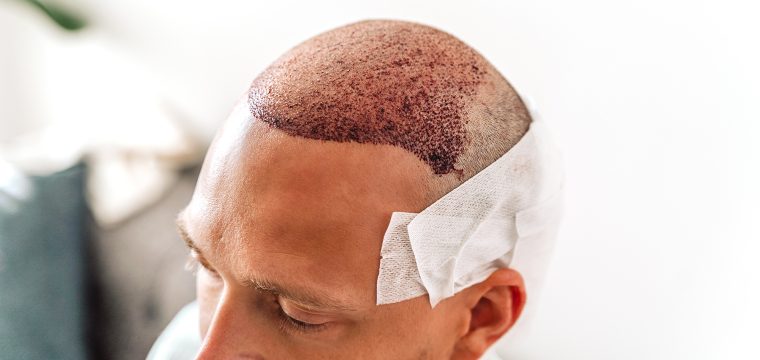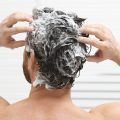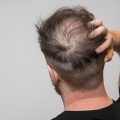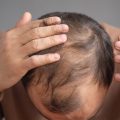
Hair Transplant Recovery Tips
Last updated on August 6, 2025
Once your hair transplant procedure is complete, the focus shifts to recovery—and that’s where the real progress starts. Healing well after the procedure plays a crucial role in how your new hair grows and how your scalp settles. Whether you’ve opted for a Follicular Unit Extraction (FUE) or Follicular Unit Transplantation (FUT), your hair transplant recovery plays a major role in the success of the procedure. While modern techniques offer minimal downtime, there are still important steps to follow to encourage healthy hair regrowth and reduce the risk of complications.
This guide offers practical, medically backed recovery tips for both men and women, from general aftercare to more unusual advice—and explains how additional treatments like growth factor therapy, exosomes and Liquid Hair Therapy can further enhance your results.
It is important that you follow the after care advice from your doctor once you have had your hair transplant which provides detailed instructions.
Hair Transplant Recovery Tips
Recovering from a hair transplant doesn’t have to be difficult—but it does require care, patience, and a few practical steps. Here’s how to stay comfortable during your healing period and support long-term results.
1. Follow your doctor’s instructions carefully
Your hair transplant doctor will give you detailed aftercare guidelines. These usually include how to wash your hair, which products to avoid, and what activities to limit. Stick to these instructions closely, especially in the first 7–10 days.
2. Sleep with your head elevated
To minimise swelling around the forehead and eyes, sleep with your head elevated on a few pillows or in a reclining chair. This is particularly important for the first 3–5 nights post-procedure.
3. Avoid touching or scratching the grafts
It’s natural to feel some itchiness or discomfort, but avoid picking, rubbing, or scratching the treated area. Disturbing the grafts can dislodge them and lead to infection or poor growth.
4. Keep your scalp clean and dry (but not too dry)
You’ll likely be advised not to wash your scalp for the first few days. After that, gentle rinsing with lukewarm water and a mild shampoo may be allowed.
5. Avoid physical activity and sweating
Exercise, steam rooms, and sun exposure should be avoided for at least two weeks. These can lead to excessive sweating, which increases the risk of infection and disrupts healing.
6. Use a silk pillowcase
Swapping to a silk pillowcase can reduce friction against your scalp and help preserve the newly implanted follicles while you sleep.
7. Stay away from smoking and alcohol
Avoid smoking, and alcohol in the days following your hair transplant, as they can interfere with blood flow, delay healing, and increase the risk of complications. Giving your body the best environment to heal will help protect your grafts and support healthy regrowth. Try to stop smoking and limit alcohol for at least a week before and after your transplant.
8. Avoid some hats and all helmets until approved
It’s tempting to cover up with a hat or wig, but putting pressure on the scalp too soon can disrupt the grafts. Wait for the all-clear from your clinic before wearing anything that touches your scalp.

Wondering how long it takes for a hair transplant to heal?Hair transplant healing typically takes 7–14 days for the scalp to settle, with visible hair growth beginning around 3–4 months and full results appearing after 12–18 months. Post-op recovery plays a vital role in protecting the grafts, preventing complications, and creating the right conditions for healthy, long-lasting hair regrowth.
Troubleshooting Common Hair Transplant Post Op Issues
Even with careful aftercare, it’s normal to experience a few bumps during your hair transplant recovery. Here’s how to identify and manage the most common post-op concerns before they become problems.
Swelling
Mild swelling is common, especially around the forehead and eyes. Keeping your head elevated.
Itchiness and scabbing
This usually peaks around days 5–7. Don’t touch scabs until instructed to do so. A saline spray (if recommended by your clinic) can soothe itchiness.
Shock loss
It’s completely normal for transplanted hairs to fall out within 2–3 weeks. This is called shock loss, and the follicles enter a resting phase of the hair growth cycle before regrowth begins around the 3-month mark.
Redness and soreness
These symptoms should gradually fade. If redness persists or worsens after 10 days, contact your clinic to rule out infection.
Supportive Hair Growth Treatments to Enhance Recovery
Complementary treatments can accelerate healing and promote better results post-transplant. Here’s a breakdown of the most effective therapies and how they differ:
1. Liquid Hair Therapy
How it works: A small amount of your own blood is drawn and spun in a centrifuge to isolate growth factors. These are then injected into the scalp to stimulate cell repair, enhance blood supply, and support follicle function.
Best for: Improving the survival rate of grafts, speeding up healing, and boosting hair density in both the donor and recipient areas.
When to start: Typically 1–2 months post-transplant, with treatments repeated monthly for best results.
2. Exosome Therapy
How it works: Exosomes are cell-derived vesicles rich in growth signals and proteins. Sourced from stem cells, they are applied to the scalp to regenerate damaged tissues, reduce inflammation, and support hair follicle regeneration.
Best for: Men and women experiencing pattern hair loss, thinning hair, or who want to enhance their transplant results using advanced cellular therapy.
When to start: Usually around 2–4 weeks post-transplant. Results can appear faster than with other treatments due to the high concentration of regenerative molecules.
Difference: Unlike growth factor therapy which uses your own blood, exosomes are derived from stem cell lines and have a more potent regenerative effect.
3. Regenera Growth Factor Treatment
How it works: This treatment uses a highly concentrated serum of naturally occurring growth factors. It is applied through a fine injection technique to nourish the scalp, stimulate blood flow, and support healthier hair follicles.
Best for: Individuals with thinning hair and no bald patches, or as part of a pre- or post-transplant care plan. It’s suitable for both men and women experiencing early-stage hair loss.
When to start: It can be used on its own or alongside hair transplants. Many patients opt for 2–3 treatments per year to maintain results.
Difference: Liquid Hair Therapy is a sterile, minimally invasive treatment that doesn’t require blood draw or stem cells. It provides a quick, natural approach to improving scalp health and hair quality.
Supporting Healthy, Thicker Hair Growth
Hair transplant recovery is a journey—not an overnight fix. Most patients see visible improvement within 4–6 months, with full results taking up to 12–18 months. In the meantime, following a healthy lifestyle, reducing stress, and considering supportive treatments can help protect your investment and enhance your outcome.
At Hair Transplants Melbourne, we support our patients before, during, and after the procedure with tailored care plans that include not just the procedure, but ongoing advice and advanced therapies like Growth Factor Treatment, Exosomes, and Liquid Hair Therapy. If you’re considering a transplant or looking to improve your recovery, get your free online quote or phone consultation with our experienced team today. We’re here to guide you every step of the way.
FAQs
How long does a hair transplant take to heal?
Recovery time varies slightly between FUE and FUT, but most patients can return to work within 5-7 days. Scabs usually heal within 7–10 days, and full recovery takes several weeks. Visible hair growth typically starts around the 3-month mark. At Hair Transplants Melbourne, our experienced doctors support you through each stage. View our before and after photos or book a free 15-minute phone consult for personalised recovery advice.
What can I do to speed up healing after a hair transplant?
Following hair transplant post op instructions, avoiding strenuous activity, and staying hydrated all help. Supportive treatments like Growth Factor Therapy, Exosome Treatment, and Liquid Hair Therapy can also enhance healing and hair regrowth. These therapies improve blood flow, strengthen follicles, and nourish your scalp. Our Melbourne team can recommend a tailored post-transplant plan—contact us for a free online quote or browse our medical hair growth solutions online.
What are the signs of infection after a hair transplant?
Redness, pus, severe swelling, and pain that worsens over time can indicate infection. While infections are rare, they must be treated quickly. If you notice any unusual symptoms, contact our clinic in Melbourne immediately. Our experienced hair transplant doctors are always available to provide expert follow-up care and recommend the right medical treatments if needed.
Can I combine hair transplants with other hair growth treatments?
Yes—many of our patients use treatments like Growth Factor Therapy, Exosomes, and Liquid Hair Therapy alongside their transplant for better results. These options can stimulate natural growth, support scalp health, and enhance follicle survival. We offer personalised treatment plans based on your hair type and goals. Contact us to book a consult at our Melbourne clinic or get a free treatment quote today.










